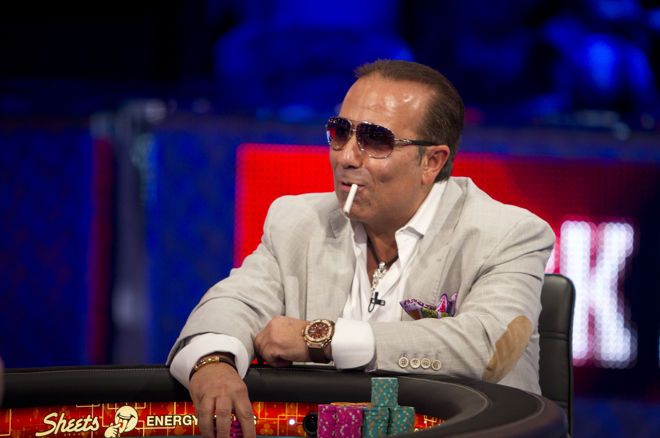Online Poker Tournament Strategy Multi Table
Multi-tabling is a method of playing online poker in which you participate on multiple tables simultaneously. Many recreational poker players choose to multi-table because it’s more fun and if they are skilled then they can also increase their profits over time. Assuming you're a skilled player with an understanding of basic poker strategy, it stands to reason that the time you can put in the more money you'll get out of it. Fortunately, the online poker world is perfectly pitched for players to increase their volume. Multi-tabling is the process of playing more than one game at a time. Until the advent of online poker that is (where you can play up to 24 tables at a time). The reason to play more than one table is simple: you take a small hit on your win rate per table for an increase in the number of hands you can play. This should increase your hourly winrate. But the question is ‘ how many tables should you play?’.
Playing in MTTs (Multi Table Tournaments) provides an excellent buy-in/likely return ratio. Although the odds of beating out several hundred, or even several thousand opponents drag the equation down, MTT play is still a pretty good EV+ one for an experienced poker player.


General MTT strategy is pretty simple. Since tournament chips are your life-blood in the game, you have to do whatever it takes to protect them. In this respect, in the early stages of a MTT, you need to play tight, and act only on good starting hands, from late position.
It’s amazing how many people there are who play the exact opposite of this strategy. They launch into all-in coin-flips early on, something they should avoid at all cost. If you play in a freeroll, this modus operandi will grow to epidemical proportions.
Be disciplined, and do not allow yourself to be dragged into the early all-in frenzy. Sometimes, in the very early stages it is a good choice to fold a hand you know is the best starting one, when you’re faced with several all-in calls.
The reason is simple: more calls mean more drawing hands, which suck the odds out of your hand. If you call the all-in and lose to a drawing hand, you lose everything.
If you call and you win, you’ll double or possibly triple your stack up, which may seem like a huge achievement, but if you look at the tournament in its entirety, you’ll see it’s not that big of a boost.
According to Sklansky, author of The Theory of Poker, play should be tighter when the blinds are very small compared to the size of future bets. In the early stages of a MTT, this is exactly the case.
As the tournament progresses, you need to loosen up a little. A good way to promote a loose table image (which you can then exploit) is to act loosely before the flop. That will also give you the chance to attempt making a good hand every time you take a peek at the flop.
The key to not paying too much for these hands is to act very tight after the flop. After the flop lands, your hand is 75% made. Keep this in mind and do not chase senseless draws.
Near the middle stages of the tournament, you’ll be confronted with a dilemma: the blinds will have escalated, and your stack is starting to show signs of cracking under the increasing pressure.
People around your table keep showing down good hands, and play doesn’t look like it’s loosened up on the whole.
Your primary objective in this situation should be to protect your stack. Acting tight won’t do anymore though, you’ll need to break out of your shell and – like it or not – start stealing some blinds.
Since the blinds are already pretty big, you’ll get nicely rewarded for your efforts.
Your secondary objective should be to catch a good hand you may trap an opponent with, because you need to keep in sight that the blinds will continue to rise, and soon, stealing one every now and then won’t be enough either.

As you’re nearing the bubble, play will tighten up. Nobody wants to be the last out-of-money player, so they’ll try to hunker up and let others bust out to thrust them into the money.

A good player can take advantage of the tight play, by stealing blinds, forcing people to fold better hands and so on. Needless to say, all the while you need to keep an eye on the size of your stack and its relation to Harrington’s M variable, which is a sum of the BB and the SB in a given moment.
The more such Ms your stack contains, the better you can focus on optimal strategy.
As you’re nearing the final table, play will get progressively looser. You’ll still be confronted with a full table of opponents, but there’s a different reason for loosening up: the size of the blinds is getting very big compared to that of future bets. This situation alone calls for loose play.

This is the coin-toss stage of the game. People will lower their starting and showdown hand requirements, even though they’ll be confronted with the same mathematical odds.
If you’re lucky enough to make it to the short-handed and heads-up stages of the game, you need to turn into a maniac. The odds are getting better too this time, the blinds keep increasing, so everything calls for aggressive play.
Online Poker Tournament Strategy Multi Tables
In short handed and heads-up play, the value of your cards gets a whole new significance: in heads-up play, for instance, 72o is no longer the worst hand: 23o is.